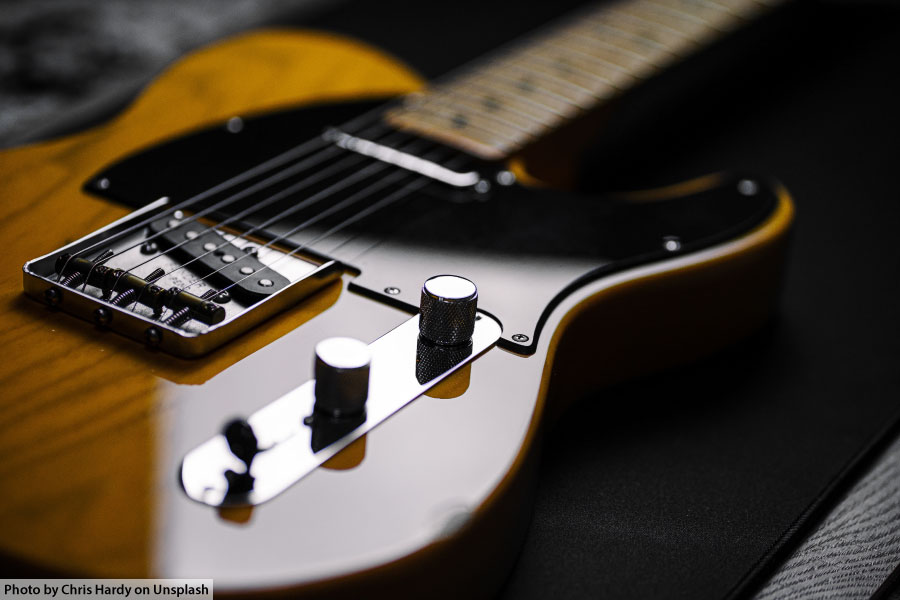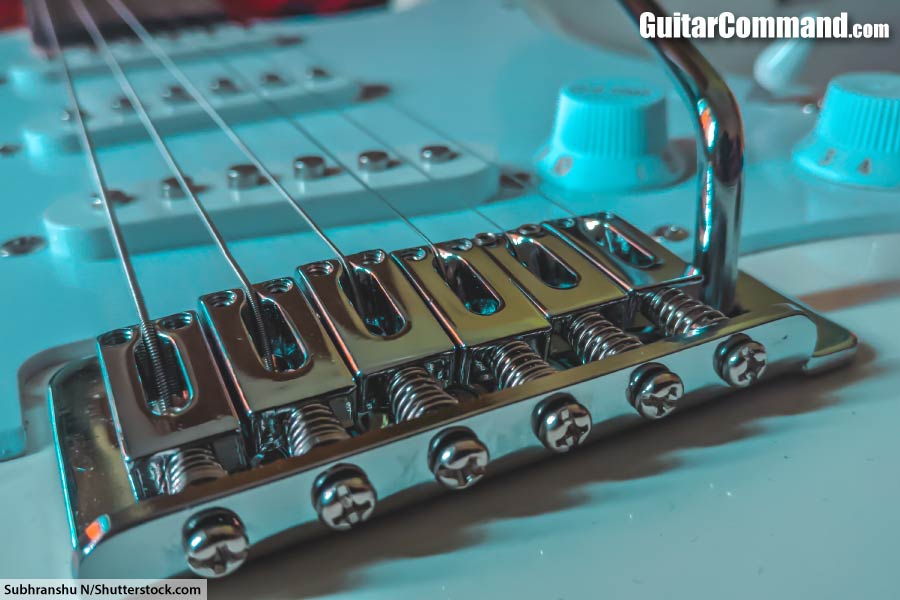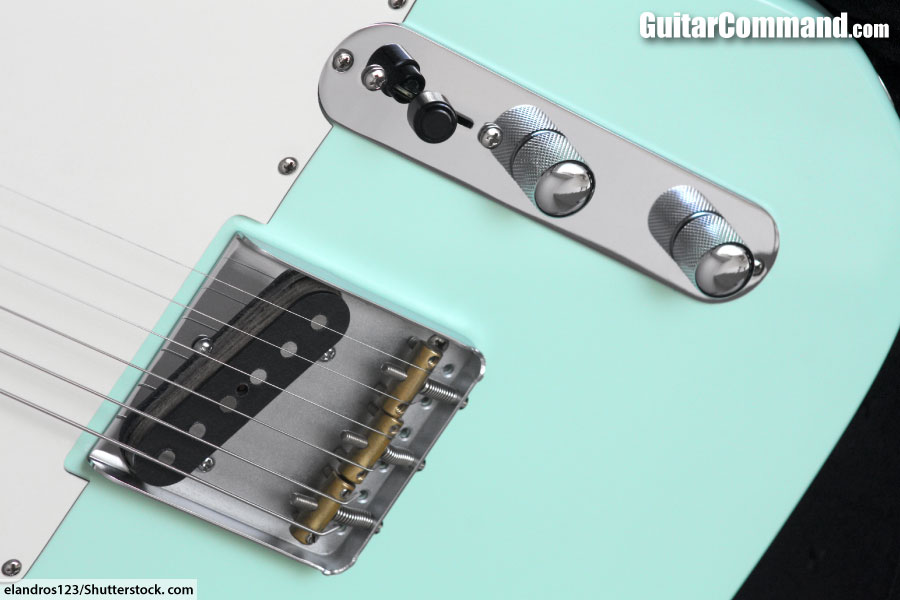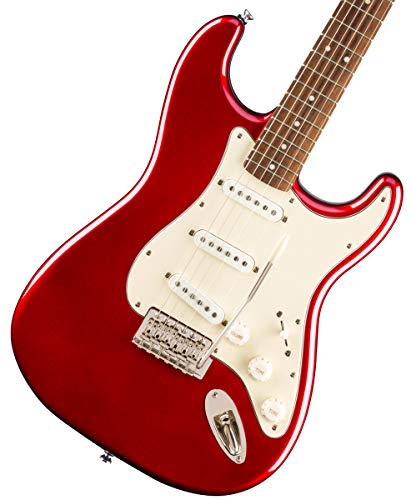Telecaster vs Stratocaster: which is best for you and your style of playing? On this page you'll find a complete guide to the differences between these two iconic electric guitars...
Introduction
The Telecaster and Stratocaster are solid-bodied electric guitars first introduced by Fender in the ‘50s. The Telecaster, with its single horn body, two single coil pickups and narrow headstock, is a favorite of country and indie guitarists; the Stratocaster, with its two-horned body, three single-coil pickups and tremolo, finds favor among blues and rock guitarists.
The Telecaster was first released in 1950 as the Broadcaster; a trademark dispute caused the guitar to be rebranded as the Telecaster in ’51. The Stratocaster was released in 1954.
Together, these iconic electric guitars have helped shape rock and pop music for almost seventy years, and are still among the most popular guitars for beginners and pros alike.
On this page is a complete guide to the differences between Telecaster and Stratocaster. We cover the construction, tone, body materials, playability, and the type of music you can play with each instrument.
We’ll also look at the famous guitarists who have played Telecasters and Stratocasters over the years, and provide you with a rough guide on how much you can expect to pay for each guitar if you want to get hold of one for yourself.

Related Pages
Best Telecaster & Telecaster-Style Guitar 2022 Buying Guide
Best Fender Stratocaster 2022: Review Of The Current Range
Bass vs Guitar – Which Is Best For You?
Electric vs Acoustic Guitar – Which Is Best For You?
T-Style vs S-Style Guitars
They say that imitation is the sincerest form of flattery (although we’re not sure Fender’s legal department would agree), and between them, the Telecaster and Stratocaster have spawned a multitude of imitations from brands such as Ibanez, ESP, Charvel, Nash, and countless others.
As a general rule, comparisons on this page between the original Telecaster and Stratocaster guitars also apply to “T-style” and “S-style” copies.
Below is a round-up of the main differences between Telecaster and Stratocaster in their standard configurations…
Telecaster vs Stratocaster
- A Telecaster has a single-cutaway body; a Stratocaster has a dual-cutaway body.
- A Stratocaster has a wider, heavier, headstock than the Telecaster.
- The Telecaster has two single-coil pickups and three-way switching; the Stratocaster has three single-coil pickups and five-way switching.
- Both Telecaster and Stratocaster have the same 22 frets and a 25.5” scale, with identical nut width and 9.5” fretboard radius.
- Typically, both types of guitar are made from an alder body and maple bolt-on neck.
- A Telecaster has one tone knob, which in most Telecaster affects both pickups; a Stratocaster has two tone knobs; one for the middle and one for the neck pickup. Both guitars have a master volume control and pickup selector.
- The Telecaster’s bridge pickup is both wider and longer than that of a Stratocaster. The Telecaster bridge pickup is mounted on a metal bridge plate.
- Both guitars have six adjustable saddles, except for very old Telecasters, which have three saddles.
- The telecaster’s distinctive, fixed metal bridge mount houses the bridge pickup, while Stratocasters are fitted with a tremolo system.
- The Telecaster is known for its distinctive “twang”, while the Stratocaster is capable of producing a wide range of sounds, from bright to mellow in tone.
- The Telecaster is most commonly associated with country, indie, and lighter rock styles, while the Stratocaster is more commonly associated with electric blues, rock and metal.
Telecaster vs Stratocaster Neck
Both the Telecaster and Stratocaster feature bolt-on necks. These are usually made from maple, and have 22 frets and a comfortable 25.5” scale. The shape of the neck usually varies by decade, with guitars from certain periods having wider or narrower necks than those from others.
The main difference in the necks of Telecaster and Stratocasters is that the headstock of a Strat is noticeably bigger and wider than that of a Tele.

This became particularly noticeable on guitars produced from 1965 to 1981; the years that Fender was owned by CBS. Some players, including Yngwie Malmsteen, claim that the larger piece of solid wood required to make this bigger headstock improves the guitar’s sustain and its overall tone, especially when compared to the smaller Telecaster headstock.
Both Telecasters and Stratocasters are available with either a maple or rosewood fingerboard.

Telecaster vs Stratocaster Body & Construction
The most noticeable visual difference between the two guitars is the shape of the body. The Telecaster features a flat body with a single cutaway, while the Stratocaster’s body is contoured, with a double cutaway to facilitate playing at the upper frets.

The Fender Telecaster, introduced in 1951, was the first mass produced solid-bodied electric guitar. Looking to refine his original model, Leo Fender made some modifications to his original design to create the Fender Stratocaster.
Among the concessions he made to player comfort were the introduction of contours on the Stratocaster’s body, notably where a guitarist’s arm might rest while playing.
An additional cutaway on the upper horn was implemented to make playing notes beyond the 12th fret easier for guitar players.
As a general rule, both the Telecaster and Stratocaster feature bodies made from alder. This lightweight wood has a resonant, balanced tone, with plenty of attack and sustain.
This rule does not apply to all Tele’s and Strat’s and alternative woods (such as ash and mahogany) have also been used at various times. George Harrison, for example, played a Telecaster made from rosewood.
Tremolo
Whereas the Telecaster traditionally has a fixed tailpiece, one of the defining features of the Stratocaster is the presence of a tremolo system, in which the bridge is mobile, being held in position by springs accessible from the underside of the guitar's body.

A tremolo allows a player to lower or raise the pitch of a note or chord by pushing down or pulling up the tremolo bar (also known as a “whammy bar”).
The expressive effects made available with a tremolo system range from gentle vibrato to violent “dive-bombs” (although the latter is not advisable on the traditional, non-locking, tremolo systems found on most Strats as it would send the strings out of tune).
The fixed tailpiece of a Telecaster has the benefit of tuning stability and simplicity; the tremolo of a Strat allows for (arguably) greater expressivity.
Telecaster vs Stratocaster Sound

Both the Telecaster and the Stratocaster are fitted with Fender single-coil pickups, and although the difference in the sound produced by the two guitars is discernible, it’s not as great as that between, say, a Telecaster and a Gibson Les Paul.
The Telecaster is known for its twangy, bright sound; the Stratocaster for its range of smooth, clear tones. The Tele has three pickup configurations; the Strat five.
The Telecaster has a brighter signature tone, but still offers plenty of versatility. Its neck pickup has a clear, bell-like sound, and the bridge generally has plenty of snarl and twang.
The bright twangy tones of a Tele are commonly heard in the country music genre, although the guitar’s searing, cutting tones have also made their way into rock.
For a classic Tele tone, think of Jimmy Page’s legendary solo on “Stairway to Heaven”. The Telecaster can sound as much like a big, boxy jazz guitar as a snarling Les Paul.
The Stratocaster’s tone is generally described as “glassy”. It’s warm and woody with a little bit of the chiming “plink” you might hear when flicking a wine glass with your fingernail.
It’s kind of like the aural equivalent of sunlight through a full beer glass.
The iconic Strat tone (sometimes described as “quacky”) is produced by using the bridge or neck pickup in conjunction with the middle pickup.
Using both pickups results in “phase cancellation” (essentially, the altering of a sound wave by combining two signals). An example of this Jimi Hendrix’s warm, yet fiery tone on “Little Wing”.
Famous Telecaster Players

The Fender Telecaster was the world’s first mass-produced solid-bodied electric guitar. As such, many guitar heroes of the 1950s and 1960s adopted the Telecaster as a go-to instrument, even as other models, like Gibson’s Les Paul, entered the market.
The Fender Telecaster’s bridge pickup has a very distinctive sound. It’s a powerful, twanging tone with plenty of treble.
Initially, this tone was favored by guitarists looking to cut through the mix in large ensembles, particularly those with horn sections. You can still hear some players who favor this tone today, most notably Bruce Springsteen.
The “Tele Twang” is most commonly associated with country and country-influenced styles of music, but you can hear it on classic records by bands inspired by those early players, too.
Famous Country Telecaster Players
- Luther Perkins
- Conway Twitty
- Keith Urban
- Marty Stuart
- Brad Paisley
Famous Rock Telecaster Players
- George Harrison
- Keith Richards
- Jimmy Page
- Joe Strummer (the Clash)
- Chris Shifflett (Foo Fighters)
- Carrie Brownstein (Sleater-Kinney)
- Bruce Springsteen
Famous Stratocaster Players
The most famous Strat player of all time is Jimi Hendrix, whose groundbreaking use of the instrument continues to inspire legions of players all around the world.
The Stratocaster’s radical body shape and ergonomic contours made it popular with guitarists in the burgeoning rock and roll movement of the 1960s, and as such it is heavily associated with the British blues-rock boom and the bands it inspired.
Famous Rock Stratocaster Players
- Jimi Hendrix
- Eric Clapton
- Jeff Beck
- Stevie Ray Vaughan
- David Gilmour
- John Frusciante
Hendrix’s incendiary playing also led, if somewhat indirectly, to the development of virtuosic, distorted metal playing as we know it. Plenty of the hard rock and metal players of the 70s and 80s adopted the Stratocaster as their weapon of choice, including:
- Ritchie Blackmore (Deep Purple)
- Dave Murray (Iron Maiden)
- Yngwie Malmsteen
- Edward Van Halen (albeit a heavily modified version of the Strat that he dubbed “Frankenstein”)
- Jim Root (Slipknot)
The Strat is also popular among players of lighter, pop-oriented music, including:
- Buddy Holly
- The Edge (U2)
- John Mayer
- Mark Knopfler (Dire Straits)
- Nile Rodgers (Chic, David Bowie)
Telecaster vs Stratocaster Price

If you’re looking to pick up a Telecaster or Stratocaster, but don’t know where to begin, the good news is that there is a version of these popular guitars available at pretty much every price point.
There is virtually no difference in price between a Telecaster and a Stratocaster; at every level, from beginner to pro, Telecasters and Stratocasters generally cost about the same amount of money.
If you’re a total beginner looking to dip your toes in the waters of Fender tone, Squier (a Fender-owned brand) offers a broad range of quality entry-level guitars, like the Bullet Strat and Bullet Tele, for $200 or less.
- 100% Designed by Fender
- Two single-coil Telecaster pickups
- Thin, lightweight body
- String-through-body hardtail bridge
- Satin neck finish
Standard Squier Telecasters and Stratocasters cost between $300 and $500, and offer a good entry-point into the world of electric guitar playing.
- 100% designed by Fender
- Inspired by 1960s-era Stratocaster models
- Fender-Designed alnico single-coil pickups
- Vintage-tint gloss neck finish
- Nickel-plated hardware
If you want the “Fender” logo on your headstock, then Fender’s “Player” range of Mexican-made guitars typically go for between $850 and $1000, depending on where you live.
- Alder Body with gloss finish
- Two player Series single-coil Telecaster pickups
- Modern C"-Shaped neck profile
- 9. 5"-Radius Fingerboard
- String-through-body Bridge with block saddles
More expensive American-made Fender guitars can set you back thousands of dollars, but at that price point you’re paying for a genuinely high-end instrument.
- 3 Single-coil Pickups - Satin Lake Placid Blue
- Solidbody Electric Guitar with Alder Body
- Maple Fingerboard
- Maple Neck
There are also plenty of T- and S- style guitars made for those who want something a little different from the Fender classics, such as those made by Nash, Jackson, Tokai and Suhr. These range from bargain-priced Chinese copies, to more boutique instruments constructed in small numbers by master luthiers.
You can find out more about how much a new electric guitar might set you back on this page: How Much Is An Electric Guitar?
Related Pages
Best Telecaster & Telecaster-Style Guitar 2022 Buying Guide
Best Fender Stratocaster 2022: Review Of The Current Range






